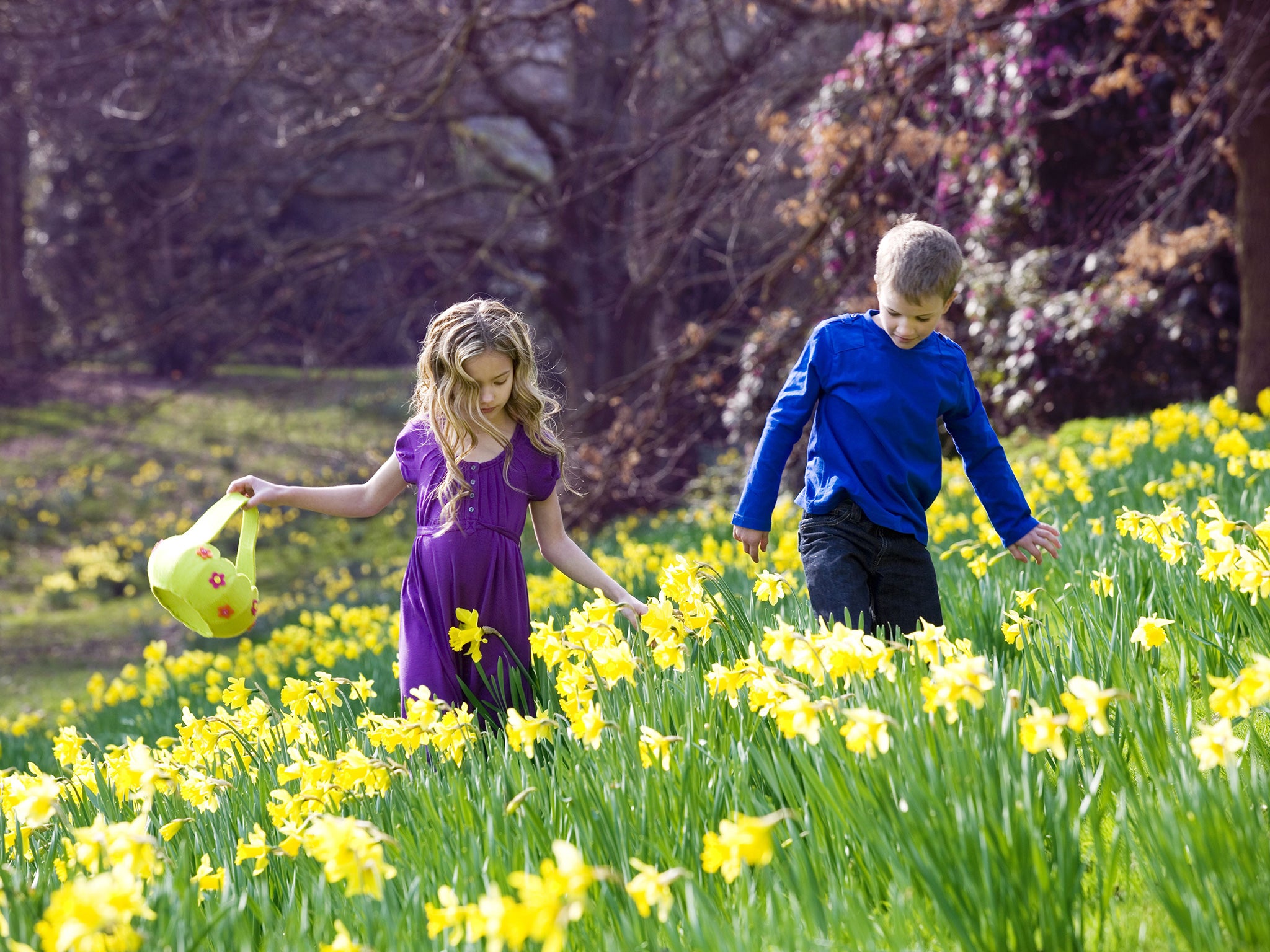Study finds that exposure to green spaces improves the cognitive abilities of children
Pupils at greener schools showed better attention and superior memory

Your support helps us to tell the story
From reproductive rights to climate change to Big Tech, The Independent is on the ground when the story is developing. Whether it's investigating the financials of Elon Musk's pro-Trump PAC or producing our latest documentary, 'The A Word', which shines a light on the American women fighting for reproductive rights, we know how important it is to parse out the facts from the messaging.
At such a critical moment in US history, we need reporters on the ground. Your donation allows us to keep sending journalists to speak to both sides of the story.
The Independent is trusted by Americans across the entire political spectrum. And unlike many other quality news outlets, we choose not to lock Americans out of our reporting and analysis with paywalls. We believe quality journalism should be available to everyone, paid for by those who can afford it.
Your support makes all the difference.When it comes to the physical and psychological benefits of being exposed to nature — and especially to scenery that is filled with lush plant life — the evidence lately has been rolling in.
Recently we reported on a study by Australian researchers showing that brief 40 second micro-breaks, in which students looked at computerized images of a green roof, led to improved performance on an attention-demanding cognitive task.
And now, in what appears to be the first study of its kind, a team of researchers find myriad additional benefits for schoolchildren who go to schools that feature lots of green spaces and natural scenery. Kids exposed to more greenery — as measured by satellite imagery of their schools and neighborhoods — showed not only better attention, but also superior working memory.
The research, conducted by researchers from Spain, Norway, and the United States — and led by Payam Dadvand of the Centre for Research in Environmental Epidemiology in Barcelona — studied 2,593 seven- to 10-year-old children from 36 Barcelona schools over the course of a full year. It was published Monday in the Proceedings of the National Academy of Sciences.

The students each took four repeated cognitive tests over three-month intervals in the space of a year. At the same time, for each kid, the researchers used satellite imagery to assess the amount of green space around the home, along the path to and from school, and around the school itself. This did not exclusively mean parks but rather included trees, plants, and grasses.
Children generally show improvement over time in these tests, as their brains develop. But kids with more exposure to greenery improved more, on average, in working memory, higher order “superior working memory,” and attentiveness. Interestingly, however, the greenness of the home (or lack thereof) didn’t seem to matter much — rather, it was the greenness of the commute and especially the school that made the difference.
“The kids where there was more green around the school, we saw better cognitive development, so they did better on these tests,” said Mark Nieuwenhuijsen, a researcher with the Centre for Research in Environmental Epidemiology in Barcelona and one of the study’s authors. “It was about a five percent difference over the time period.” That’s an amount, said Nieuwenhuijsen, that may sound small but “on a population scale, this can have huge effects.”
At the same time, the researchers also assessed levels of what they called traffic-related air pollution, which naturally tends to be lower in areas with more green space. And they found that when the role of pollution was added into their models, this seemed to be a very important factor — it explained 20 to 65 percent of the link between greenery and better cognitive development.
“Our observed beneficial associations between greenness exposure and cognitive development could have been partly mediated by reduction in exposure to [traffic-related air pollution],” the authors wrote. However, based on their data, it appeared unlikely that this factor alone could explain all of the benefit — just a significant part of it.
“We don’t think it’s all air pollution,” said Nieuwenhuijsen. “I think it’s also some kind of direct effect, when you look at green space and mental health, you see quite a beneficial effect of green space on mental health.”
That raises the question of what, precisely, is the mechanism by which exposure to greenery seems to have so many beneficial effects.
The authors list a variety of other possible mechanisms: Less exposure to distracting noise, for instance, or more likelihood of engaging in outdoor exercise.
In addition there is the “biophilia” hypothesis, associated with Harvard evolutionary biologist E.O. Wilson, who postulates that because humans evolved in certain kinds of green landscapes, we in effect have a psychological need for them. Thus, when we are deprived of greenery, it is harmful to our psyches.
In this interpretation, it’s not so much that green spaces help us as that the lack of them harms us. Or as one writer on the subject puts it: “If there is an evolutionary basis for biophilia, as asserted by E.O. Wilson…then contact with nature is a basic human need.”
‘This inborn response to nature can be very instrumental to health, and productivity, and physical and mental well-being,” added Stephen Kellert, a Yale researcher who has collaborated with Wilson in investigating the biophilia hypothesis and is trying to apply it in the built environment, through architectural design.
The implications of the research seem clear — schools should plant lots of trees and gardens and, more generally, cities should foster as much greenery as possible.
“Improved cognitive development in children attending schools with more greenness could result in an advantage in mental capital, which, in turn, would have lasting effects through the life-course,” noted the study authors.
©The Washington Post
Join our commenting forum
Join thought-provoking conversations, follow other Independent readers and see their replies
Comments